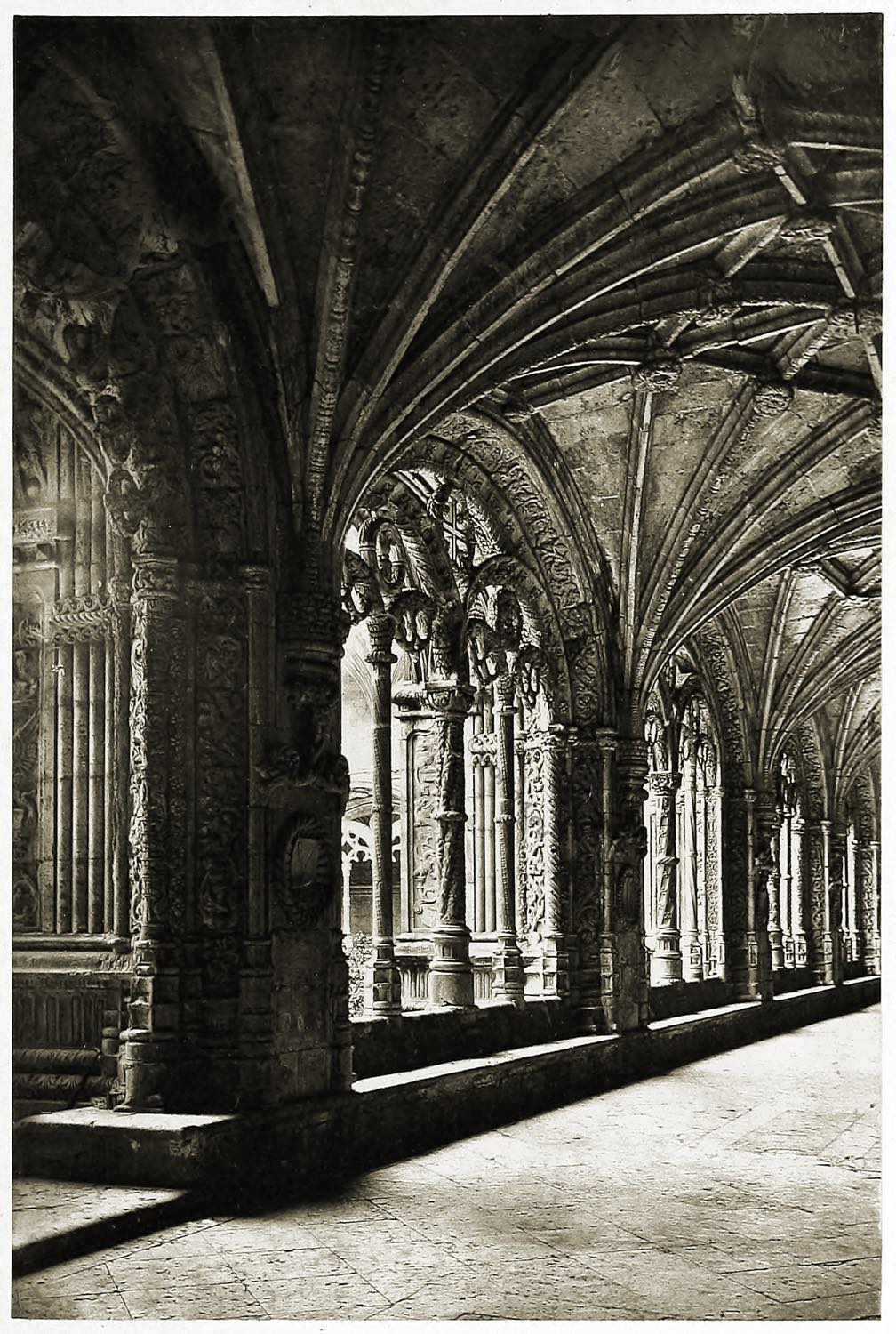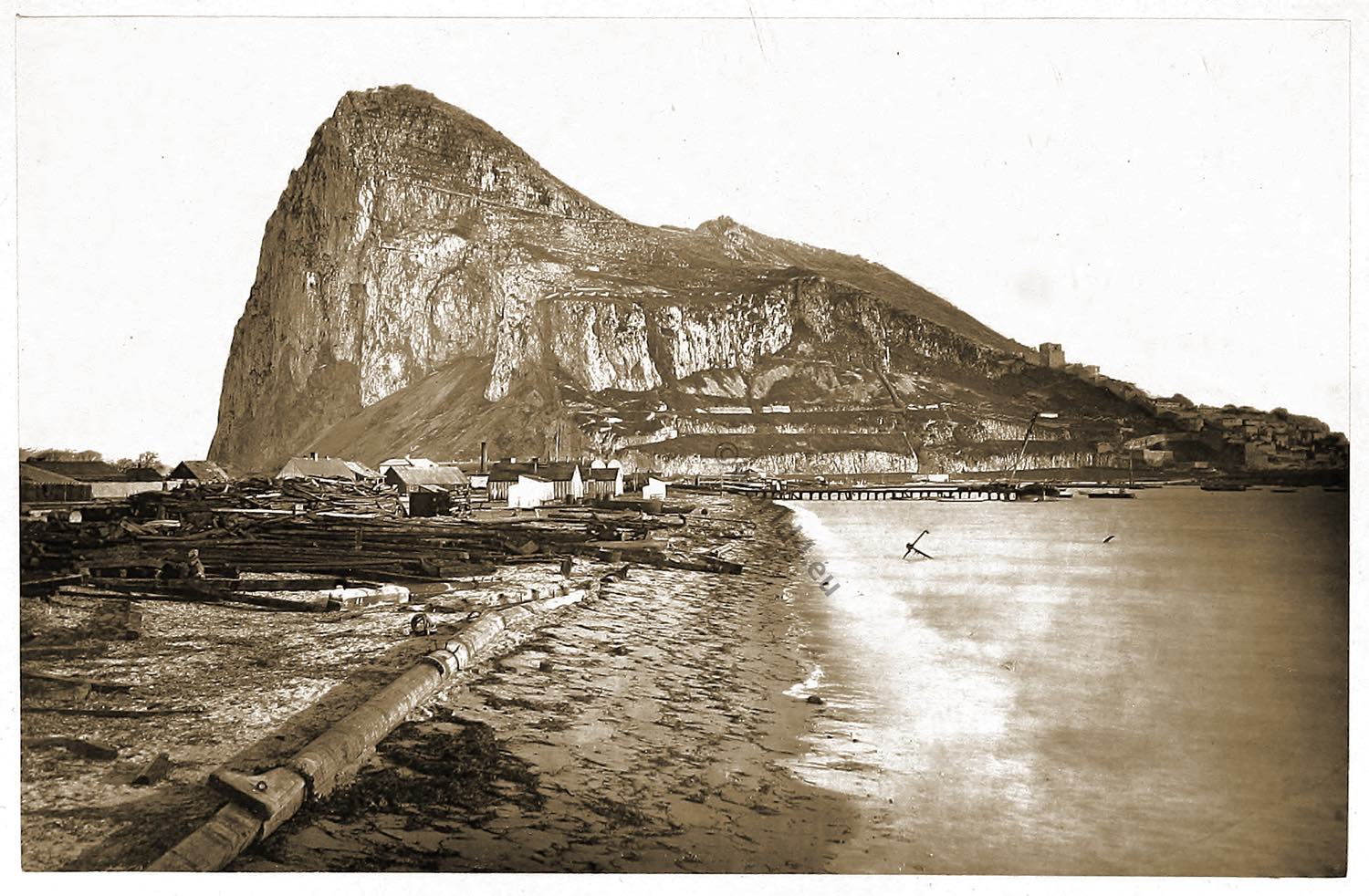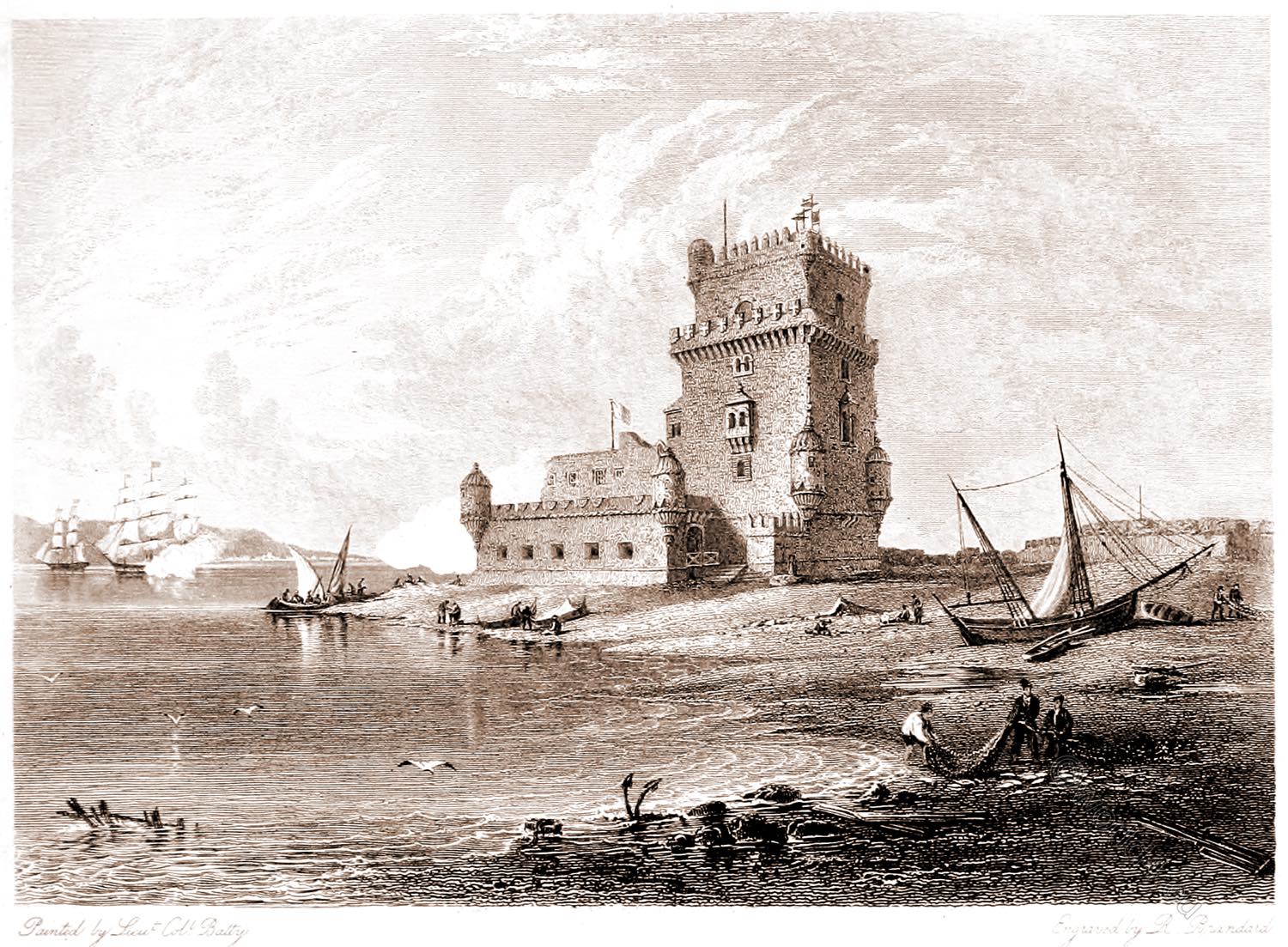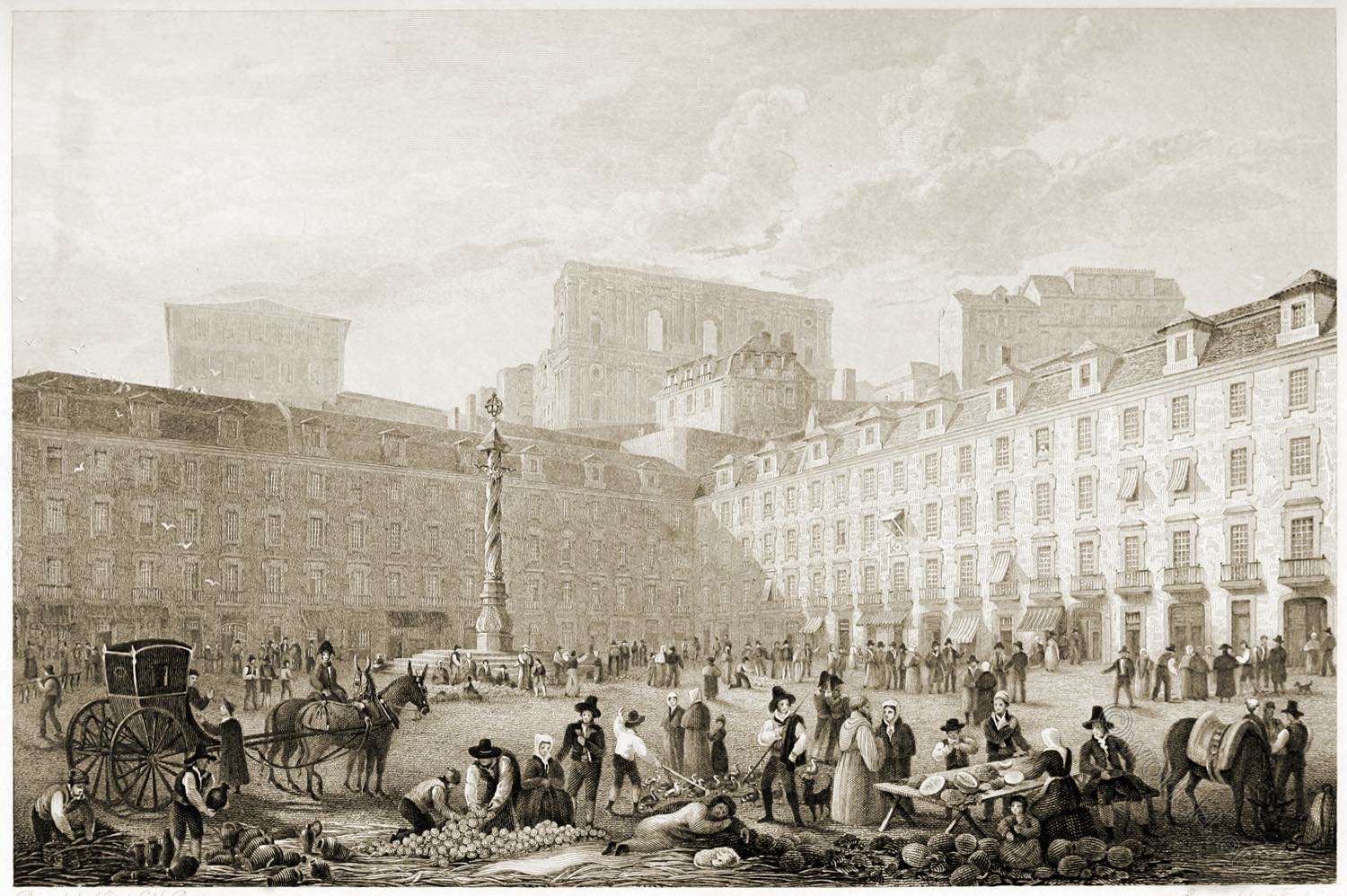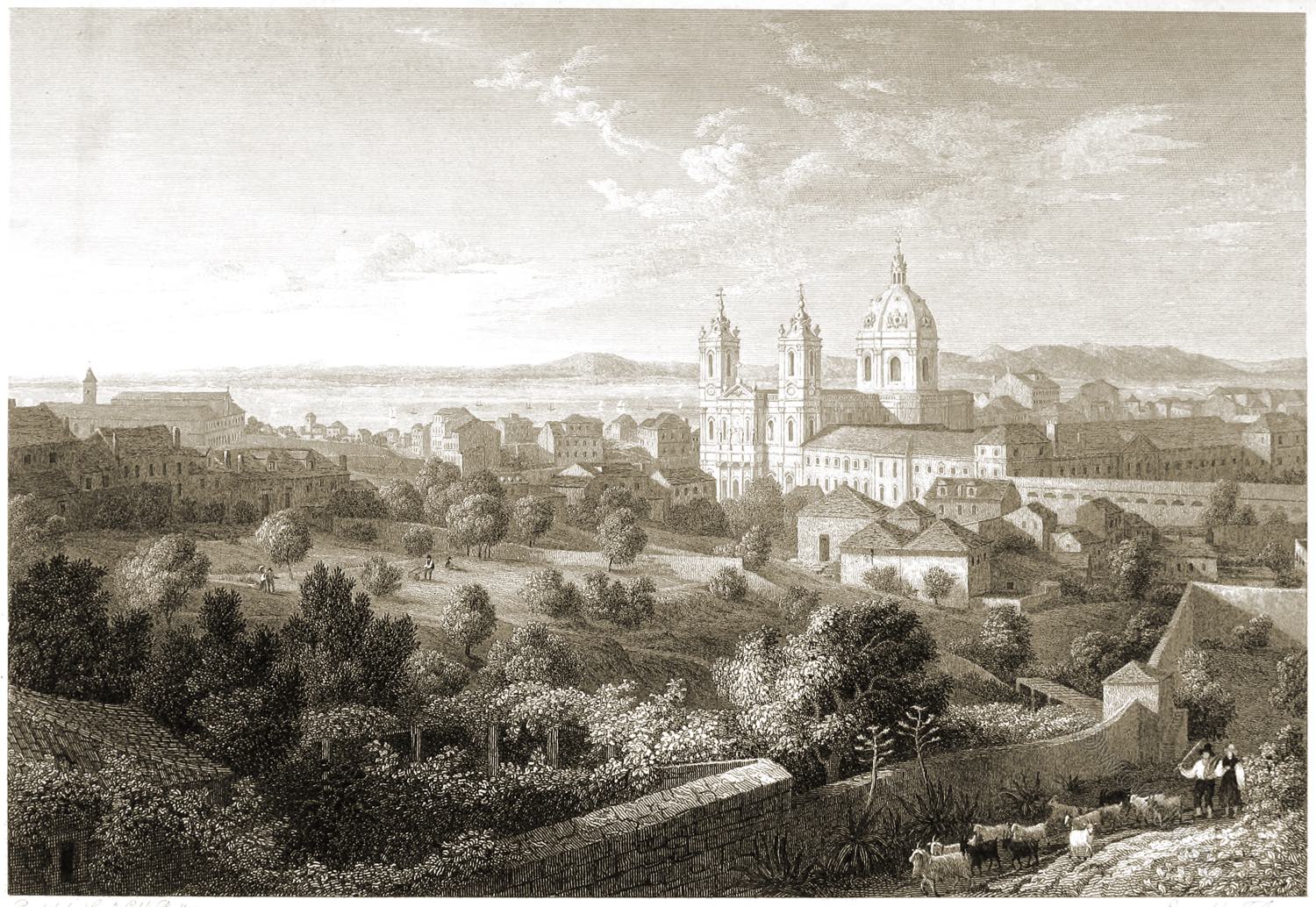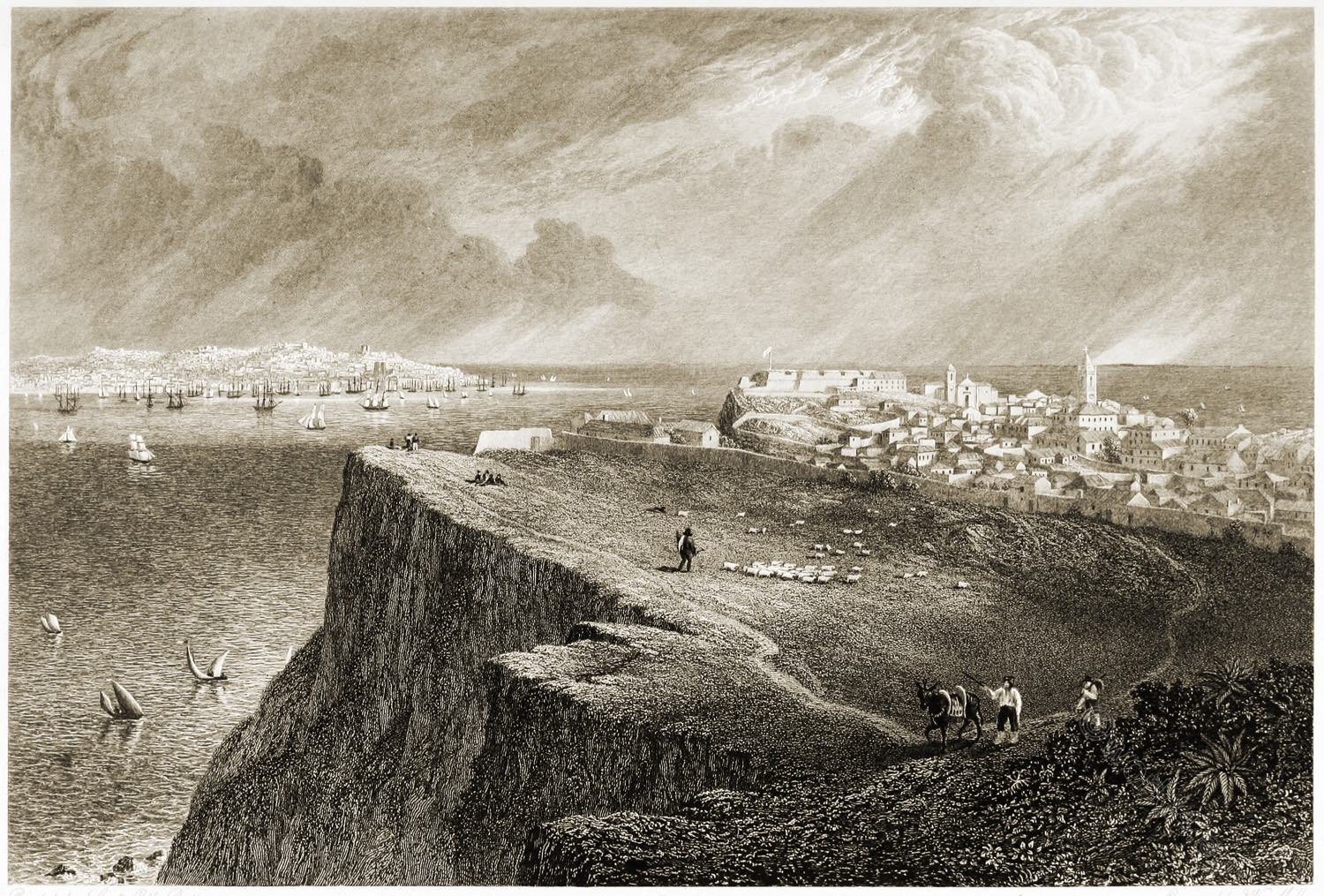
LISBON. FROM ALMADA.
Opposite to Lisbon stands Almada, on the summit, and near the east end, of the high cliffs, which extend along the south bank of the Tagus, from thence to the sea. From this elevated situation we have a panoramic series of views of incomparable grandeur. To the north, the whole expanse of Lisbon is seen covering the opposite hills, and forming a brilliant border to the Tagus.
To the west, that noble river is seen continuing its majestic course, and flowing into the Atlantic Ocean, between the distant towers of St. eJulian and of Bugio. To the east, the river spreads out into a vast aestuary, bounded by a long tract of level country.
To the south, the heights of Almada slope down into a valley covered with vineyards, behind which there is a gradual ascent of wooded hills, till, at a distance of several miles, the horizon is bounded by the mountainous ridge of the Serra d’Arabida, having the remarkable castle-crowned rock of Palmella towards the east, and the distant Moorish castle of Cezimbra towards the west.
In the accompanying view, the spectator is supposed to be looking up the river, in a north-east direction. Part of Lisbon occupies the left of the scene. The Convent of the Penha de Franca stands on the most distant hill on that side. A little to the right, on the adjoining hill, is the Chapel of Nossa Senhora da Monte.
The Castle is seen covering the hill yet farther to the right and the towers of the Church of St. Vicente, the place of interment of the Portuguese Monarchs, crown the summit of the hill near the extremity of the city.
In a line with the towers of St. Vicente, but nearer to the spectator, are the old brown towers of the Cathedral ; and in its front, close to the Tagus, are the buildings enclosing the Praça do Comércio: these, with the Alfandega, or Custom-house, the Naval Arsenal, and the Caes de Sodre, form together an imposing range of edifices. Numerous vessels are spread over the broad bosom of the Tagus; the whole, combined with the bold precipitous height of Almada in the foreground, form a striking and interesting landscape.
The name probably comes from Arabic times, from the Arabic al-maden, meaning: the mine. In the mine of Adiça, in the district of Almada, the Moors mined gold. They built a fortress around which a settlement grew, favoured by its location on the Tagus River and the opportunities it offered for fishing and agriculture. Before the Arabs, Phoenicians and later Romans had already settled here.
Source: Select views of some of the principal cities of Europe by Robert Batty. London: Moon, Boys, and Graves, 1832.
Continuing
LISBON.
Convent of St. Geronymo, Belem.
Lisbon, from the Rua de San Miguel.
Lisbon, from the Chapel Hill of Nossa Senhora da Monte.
Lisbon. The Largo do Pelourinho.
Lisbon, from Almada.

